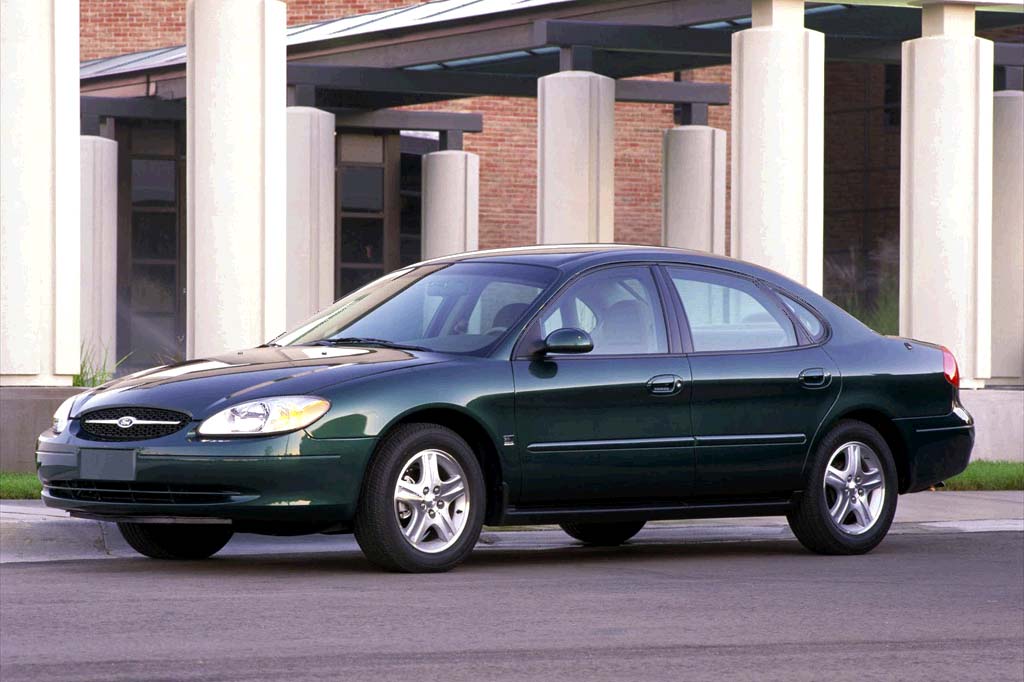| Midsize car; Built in USA |
|
|
| Good condition price range: $2,100 – $7,000* |

2000 Ford Taurus 4-door sedan

2001 Ford Taurus 4-door wagon

2000 Ford Taurus interior

2000 Ford Taurus 4-door sedan

2000 Ford Taurus SE 4-door wagon
| Pros: |
|
| Cons: |
|
Taurus returned to its roots as family transportation with the 2000 redesign. Fully contemporary in styling, a Taurus delivers fine road manners, great utility, and an appealing array of safety features, at competitive prices. Despite acceleration limitations and imperfect ride comfort, Taurus deserves a place on any midsize-car shopping list.
Overview
Ford restyled its best-selling model for 2000. Exterior dimensions changed little, but the conventional shapes displaced the previous oval look, bringing more head room and trunk space. Inside was a more traditional dashboard, along with newly available adjustable pedals. As before, Taurus shared its basic design and mechanical components with the Mercury Sable. Gone was the slow-selling Taurus SHO, leaving an LX sedan and step-up SE sedan and wagon, all with V6 engines. Upscale SES and SEL sedans also joined the group. Seating for either five or six was available, and wagons could again have a 2-place third-row seat. A 155-horsepower V6 served as base engine. Standard with upper models and optional on SEs was a 200-hp twincam V6. Both drove a 4-speed automatic transmission and ran on regular fuel. Traction control and head/chest side airbags for the front seat were new options, while 16-inch wheels were newly standard. A standard Advanced Restraints System was designed to minimize airbag injuries to the driver by gauging crash severity and seat position, then deploying the steering-wheel airbags with appropriate force. Sedans got a release inside the trunk and all models had rear child-seat anchors. Antilock brakes were standard on top models, optional on others.
Yearly Updates
| 2001 Taurus Only minor changes marked the 2001 models. Lower anchors for rear child seats were installed, and the fuel tank grew from 16- to 18-gallon capacity. The 200-hp V6 was standard in the SEL and optional for the SES sedan and SE wagon. Antilock brakes were standard for the SES and SEL, optional on other Tauruses. |
| 2002 Taurus Taurus made some previously optional features standard for 2002, and former option packages become separate models. Optional on SE at midyear was a Wood Package, complete with wood steering-wheel trim. SE, SES, and SEL sedans and wagons gained new submodels. |
| 2003 Taurus Unchanged for 2003. |
| 2004 Taurus The only changes for ’04 were mildly revised front and rear styling. |
| 2005 Taurus Taurus sedans and wagons soldier on with fewer trim levels for 2005; LX and SES versions are gone. |
| 2006 Taurus The wagon was dropped as an option, as was the 201-hp V6 engine. |
